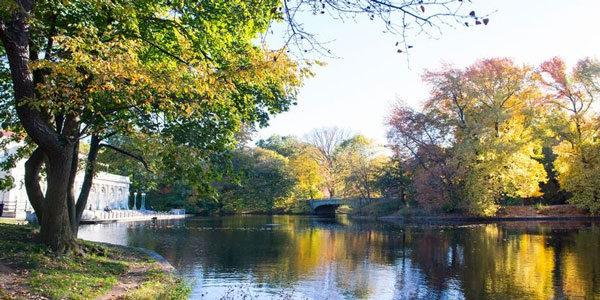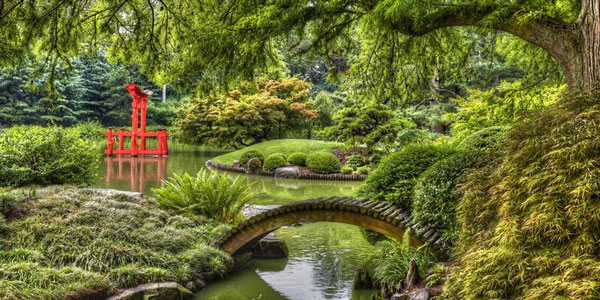New York City is renowned for its recognizable buildings, busy streets, and brilliant lights. Yet, residents have access to large natural areas to explore and admire. Being a lifelong New York City resident, I have had the chance to visit some of the city's most beautiful natural areas. From the enormous urban oasis of Central Park to the one-of-a-kind public park of The High Line, each of these natural areas provides an opportunity to escape the city's noise and commotion and enjoy some much-needed greenery.
Many parks, gardens, and animal sanctuaries provide various landscapes and recreational opportunities across the five boroughs. In this essay, I will discuss some of my favorite natural areas to explore in New York City, what makes each so wonderful, and why you must visit them. These natural places are ideal for getting fresh air, interacting with nature, and exploring new city sections, whether you are a tourist or a long-time resident.
Central Park
Central Park is, with good reason, a popular tourist and local site. It is a vast urban sanctuary covering over 843 acres in the middle of Manhattan. With a variety of settings, such as forests, lakes, and gardens, there is always something new to discover. In addition to boating, cycling, and ice skating, Central Park is a great spot to spend a day since it provides several leisure activities.
The High Line
The High Line is a unique public park constructed on an elevated railroad track above the West Side streets of Manhattan. The 1.5-mile-long park provides breathtaking views of the city and a variety of gardens, artworks, and public lounging places. It is the ideal area to escape the bustle of the city below and have a leisurely walk.
Prospect Park

Prospect Park is a large urban park in Brooklyn with various natural environments, including trees, ponds, and meadows. In addition, various leisure activities are available, including tennis, ice skating, and horseback riding. The park is additionally home to the Brooklyn Sculpture Garden, which features a breathtaking diversity of flowers and vegetation throughout the year.
Jamaica Bay National Wildlife Refuge
The Jamaica Bay Wildlife Refuge in Queens is a hidden treasure. It is a massive 9,155-acre wildlife refuge with various habitats, such as salt marshes, woods, and open water. Tourists may enjoy birding, hiking, and fishing while appreciating the bay and cityscape.
Inwood Hill Park
Inwood Hill Park, situated near the northernmost edge of Manhattan, is the borough's only surviving natural forest. The park has ancient trees, salt marshes, and breathtaking vistas of the Hudson River. Also, visitors may explore the park's various paths and learn about its rich history, which includes its role as a Native American hunting site.
Van Cortlandt Park
Van Cortlandt Park is the third-largest park in the city and is situated in the Bronx. The park has forests, meadows, and marshes among its natural features. It is also home to the renowned fishing and boating attraction of Van Cortlandt Lake. Also, visitors may enjoy the park's large trail network, which is ideal for walking, jogging, and cycling.
The Cloisters
The Cloisters is a medieval art and architecture museum in Upper Manhattan. The museum is situated in Fort Tryon Park, which provides breathtaking views of the Hudson River and New Jersey Palisades. The museum's gardens, which include over 500 plant varieties, are also a stunning natural attraction.
New York's Botanic Garden

The New York Botanical Garden comprises one of the biggest botanical gardens in the United States and is situated in the Bronx. The 250-acre park has several plant collections, including one with a 50-acre old-growth forest, a rose garden, and a Japanese garden. The park also hosts several events, such as flower exhibitions and concerts, open to the public.
Conclusion
New York City is not just a concrete jungle but also a metropolis with numerous natural areas to explore. From the famed Central Park to the hidden jewel of the Jamaica Bay Wildlife Sanctuary, each of these natural areas gives tourists and inhabitants a unique experience. These natural spots are ideal for escaping the urban bustle, connecting with nature, or exploring new city areas. Hence, the next time you are in the city, visit these natural areas and experience a new side of New York City.

Bucket List Adventure Ideas From Around The World

Combining Film and Culinary Delights - A Unique Travel Itinerary

A One-Day Plan For Vienna That You'll Want To Copy

6 Proven Sagrada Familia Barcelona Line-Skipping Methods

Most Beautiful Historical Places In The World

Where To Stay In Salento, Colombia Throughout 2022: The 3 Best Areas And Hotels

Cheap exotic vacations for couples

Which is better to go to: Luxor or Alexandria?

Where To Find South Korea's Winter Wonderland

Official Adirondacks Travel Guide – Best Things To Do (2022)

Spend Your 2023 Honeymoon in The Island Paradise Of The Seychelles.
